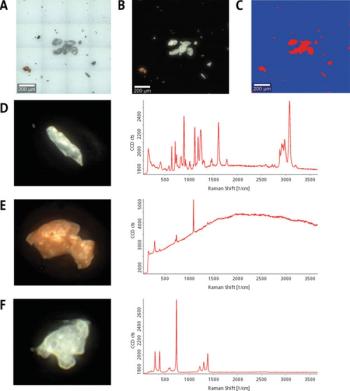
- Special Issues-08-02-2019
- Volume 34
- Issue 8
Parameters to Consider When Evaluating ICP-MS Configurations and Performance
Sayuri Otaki, ICP-MS marketing manager, Agilent Technologies
ICP-MS provides accurate, multielement analysis with low detection limits. However, real-world performance is strongly affected by the instrument configuration and operating conditions. The following parameters should be considered when evaluating ICP-MS capability for your laboratory and application.
Consider the number and type of the samples that will be analyzed
- The number of samples per day will influence the required instrument configuration. Large-capacity autosamplers are available to allow long sequences of samples to be run unattended.
- For the highest productivity, a discrete sampling device such as the Agilent Integrated Sample Introduction System (ISIS) can reduce the sample-to-sample time to less than 60 seconds.
- High matrix samples may require dilution, using a liquid autodilutor or aerosol dilution, for example using the high matrix introduction (HMI) technology available on Agilent ICP-MS systems.
Check the required analytes
- Many regulated methods include several analytes that benefit from the addition of 0.5%-1.0% chloride (as HCl) to ensure their chemical stability. Affected elements include Hg, As, Se, Mo, Tl and Ag.
- Adding HCl causes Cl-based interferences on elements including V, Cr, and As. These and other polyatomic interferences can be controlled using helium (He) collision mode, using an octopole-based cell.
Assess the plasma robustness
- Analysis of long sequences of high matrix samples requires good plasma robustness to ensure that matrix deposition does not compromise stability. Poor plasma robustness increases matrix deposition on the interface cones, which leads to signal drift, QC failures, and degraded detection limits.
- Plasma robustness is measured using the cerium oxide ratio (CeO+/Ce+). A lower ratio-around 1.0% to 1.5% is typical for Agilent ICP-MS systems-indicates a more robust plasma.
Figure 1: Excellent stability of internal standard signals throughout sample sequence of varied saline samples. Each sample was measured in triplicate using the Agilent 7800 ICP-MS with ISIS discrete sampling and HMI aerosol dilution. He cell gas mode only. ISTDs added online at 1:1 ratio. See reference 1.
Confirm the instrument meets your method requirements
- Analytical methods usually have defined requirements for performance indicators such as detection limits, linearity, spike recovery, bias, and drift. Confirm the instrument you are considering meets your analytical requirements, and that you are aware of the method setup needed to achieve this performance.
- Make sure you understand which cell gas modes are required. Most common applications can be run using only He mode, making methods more universal and reliable than if reaction gases are required.
Evaluate performance for your real application and samples
- An ICP-MS represents a big investment, so it is essential that you do a full evaluation to ensure you select the instrument that best meets your needs. Observing routine sample analysis under similar conditions to your routine workflow will give you a good indication of true instrument capability.
- It is always better to test instrument performance for your typical or most difficult sample types, not just evaluate performance running simple, synthetic standards.
Reference
(1) "High Throughput, Direct Analysis of Seawater using the Agilent 7800 ICP-MS with HMI for Aerosol Dilution," Agilent, 5991-7936EN (2017).
Articles in this issue
over 6 years ago
Vol 34 No 8 Spectroscopy, August 2019, The Resource Issue PDFover 6 years ago
Seven Common Errors to Avoid in LIBS Analysisover 6 years ago
Seven Essential Steps for In Situ Reaction Monitoringover 6 years ago
A Short Guide for Raman Spectroscopy of Eukaryotic Cellsover 6 years ago
ICP-MS: Essential Steps to Optimize Matrix Toleranceover 6 years ago
Spectroscopy Software/Computer Hardware/Automation Productsover 6 years ago
Spectroscopic Instrumentation: Spectrometer Systemsover 6 years ago
Sampling/Sample HandlingNewsletter
Get essential updates on the latest spectroscopy technologies, regulatory standards, and best practices—subscribe today to Spectroscopy.



